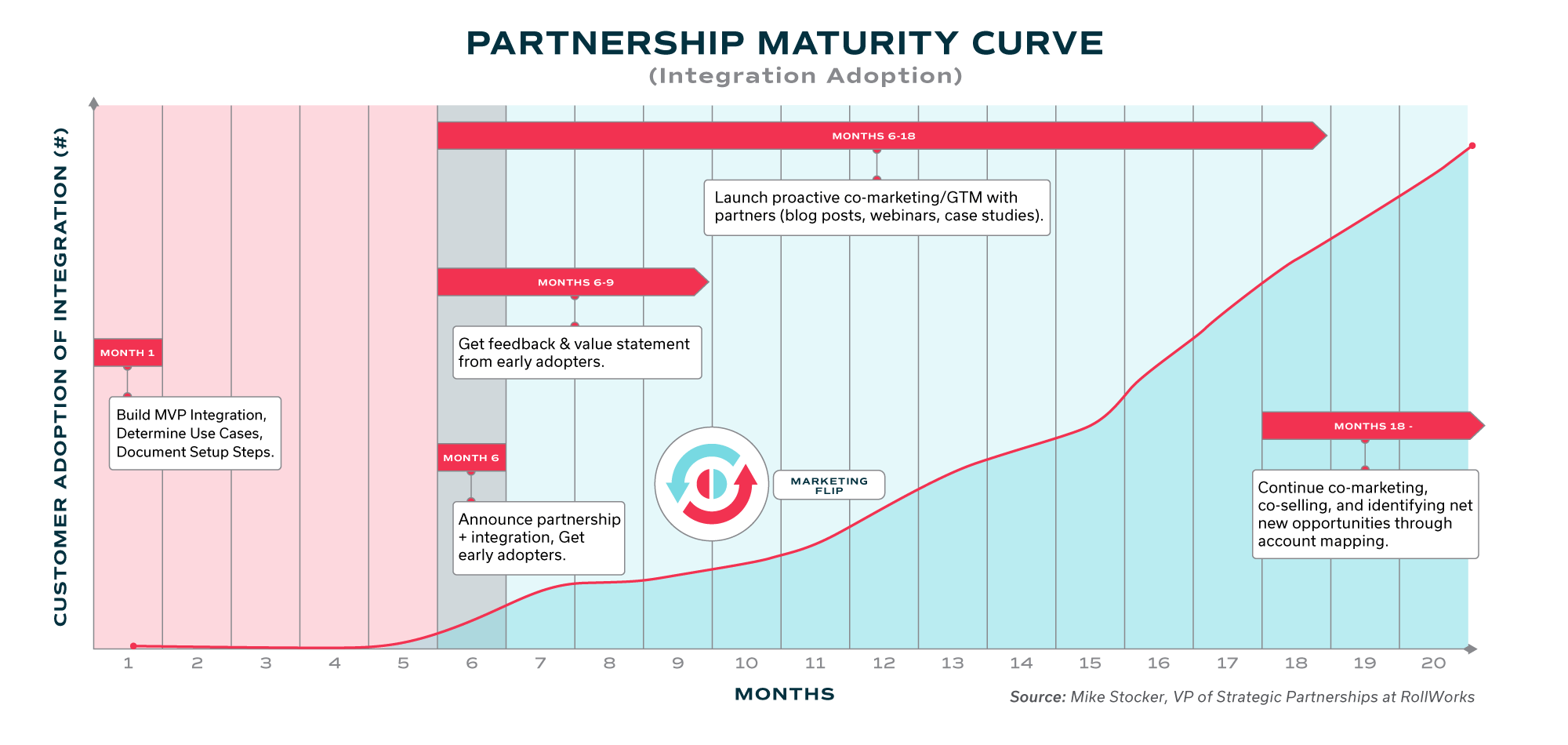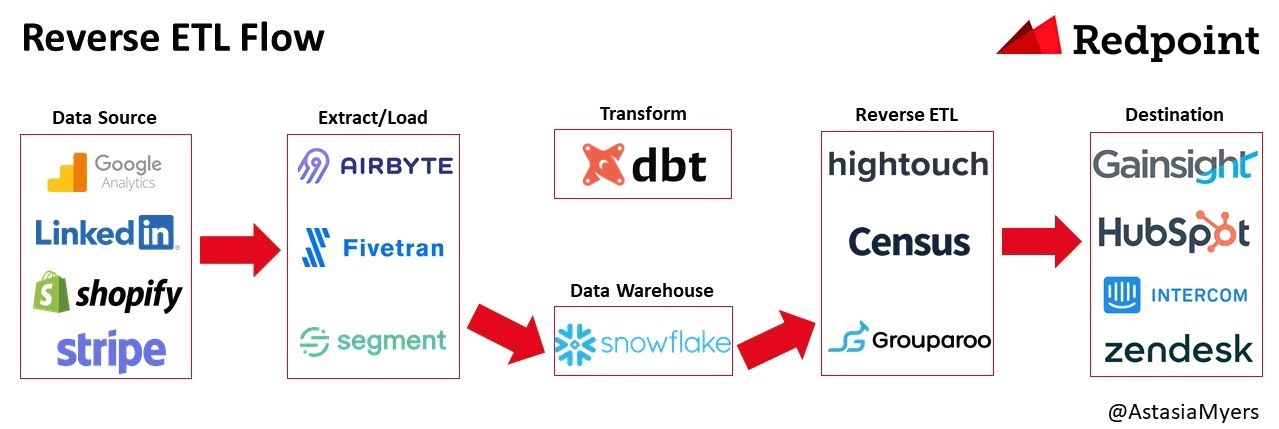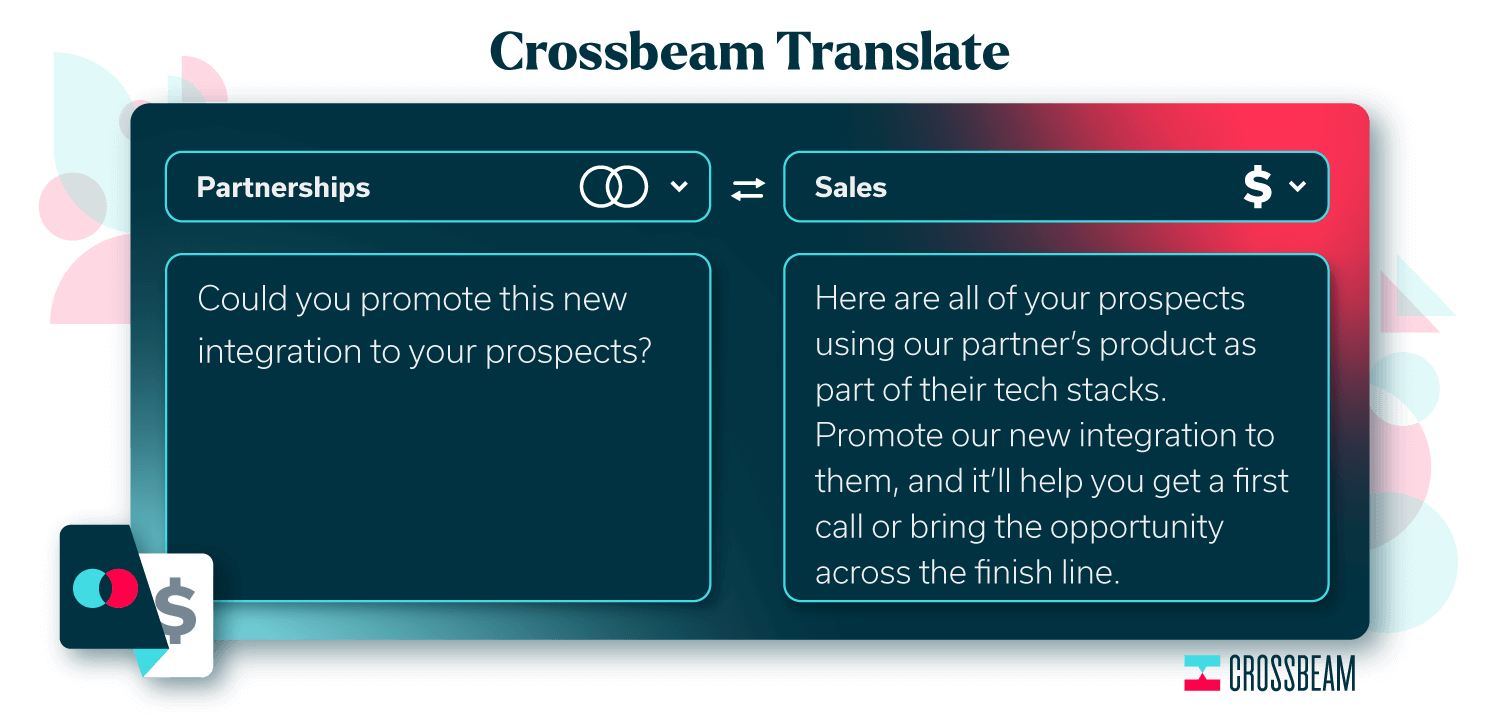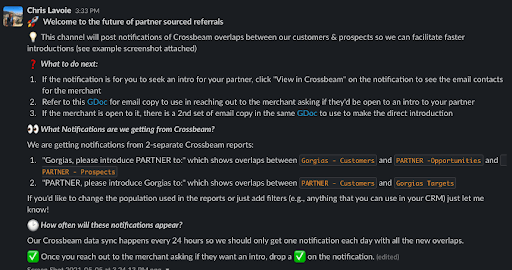Hey there, what’s your co-selling process? Wait! Don’t turn off the lights and turn on your favorite TV show to distract yourself from this daunting question.
Through data from our tech ecosystem maturity diagnostic and hundreds of conversations with partnership professionals, we’ve learned about great tactics, processes, and “soft skills” for co-selling really, really well. You know, the kind of co-selling overhaul that leads to a 30% uptick in revenue from your partner program (Hint: Check out Tip #7 below).
Below are the seven things that co-selling masters have in common. To co-sell like a Supernode, the top level of tech ecosystem maturity, you’ll need to prioritize all seven.
Psst! If you’re more of a visual learner, you’re in luck. In our webinar, “How to Co-Sell Like a Supernode,” we discuss all seven tips (and more). Watch the on-demand webinar here, or find clips from the webinar in each section below.
Tip #1 get buy-in from your partner
When you think about “getting buy-in” from your partner, the first thing you probably think about is that first pitch meeting with a potential partner.
But getting buy-in doesn’t stop at agreeing on a joint value proposition. You need to make sure that your partner’s entire team is invested in your go-to-market (GTM) strategy, that they have executive alignment, and that they know what is expected of them and when.
Define what co-selling means for your partnership. Co-selling means different things to different people. For you and your partner, does co-selling mean facilitating intros into prospect accounts for each other’s sales reps? Does it mean teaming up on calls to sell your joint solution together? Make a list of all of the ways you and your partner will co-sell (and make sure you both have all the processes, tools, and resources you need to get started).
Develop a term sheet. Before the partnership agreement comes into play, draft a term sheet for you and your partner. Use your term sheet to define the business use cases for the partnership, outline expectations, identify relevant stakeholders from the leadership team, and more. By putting all of this in writing, you can identify potential roadblocks (and pitch a solution), get a sense of the buy-in your partner has from their own team, and identify red flags (like your partner promising a time investment from the marketing team, but they’re not involved in any of your discussions).
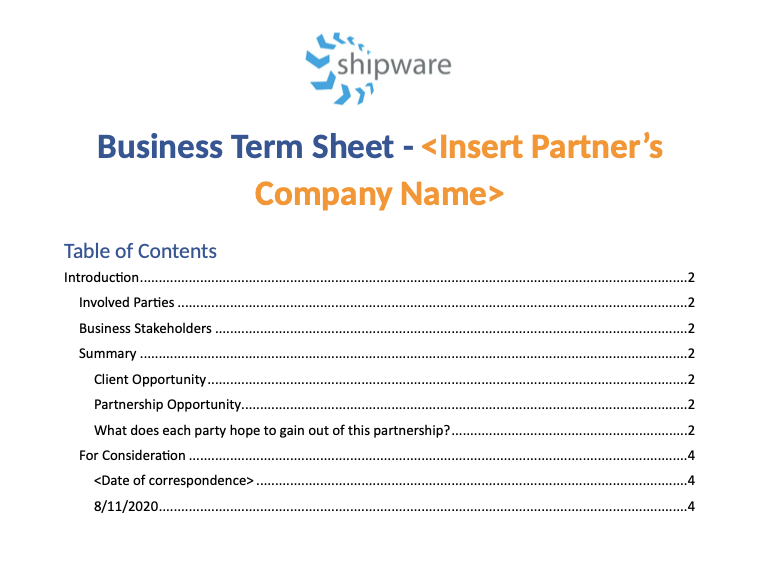
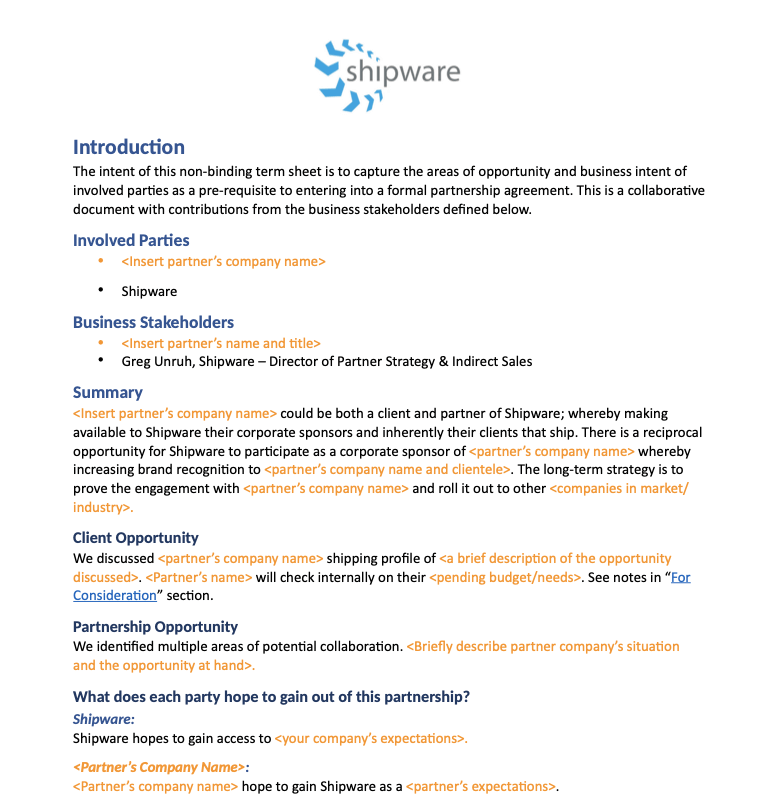
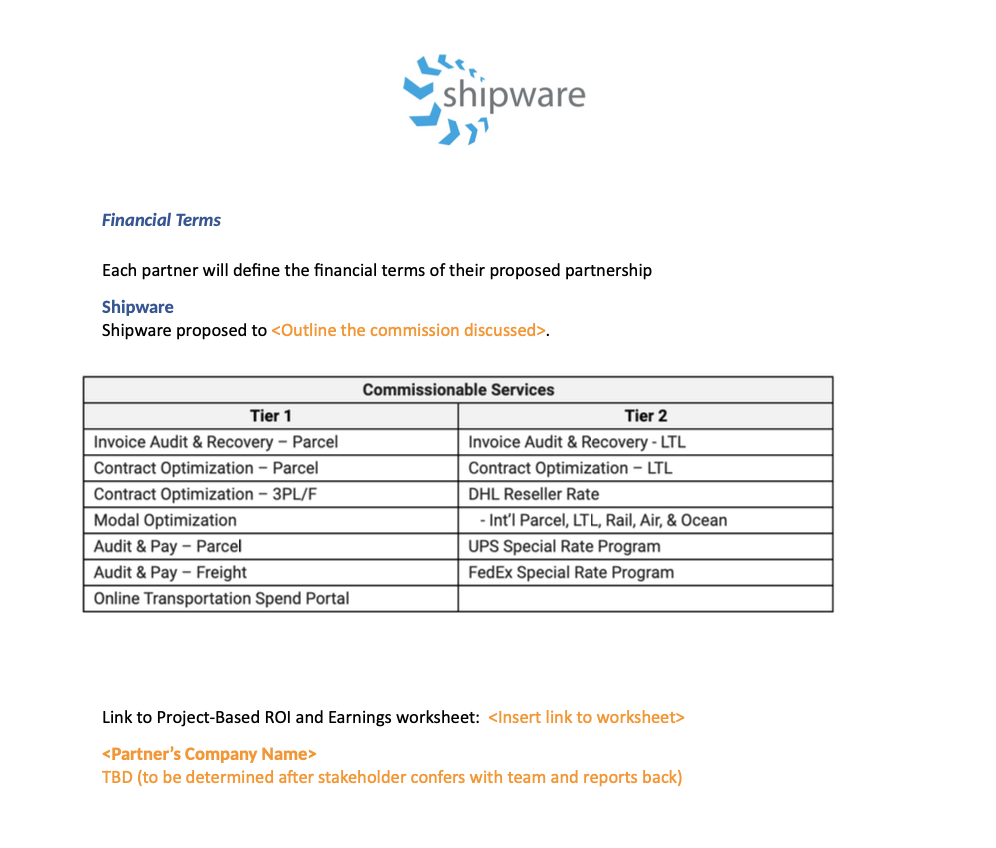
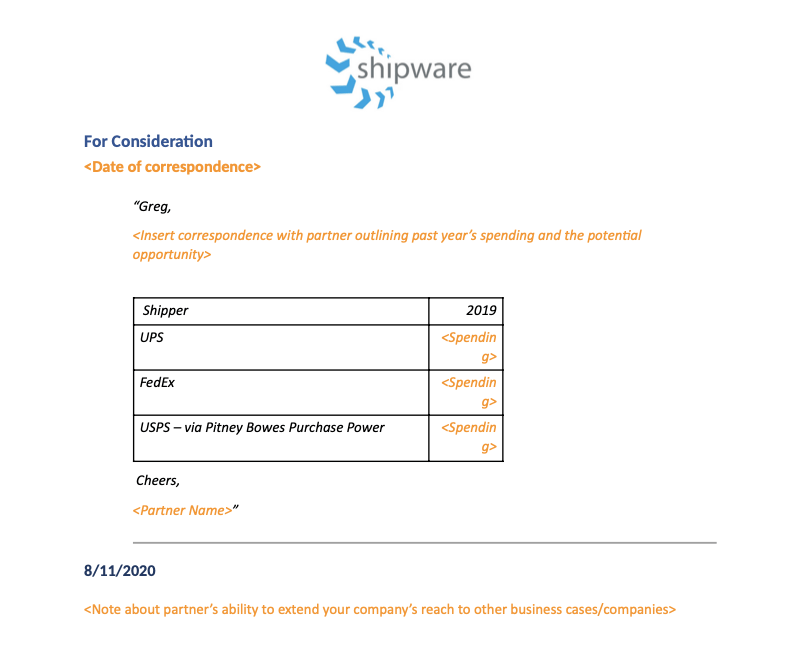
Map out your GTM. Developing an integration with your tech partner requires more than development resources. Leading up to your GTM launch, your marketing team will need to develop collateral like integration listing pages, press releases, and newsletter announcements. After your launch, your product marketing team may be responsible for developing and leading sales enablement sessions, and your marketing team may develop webinars and/or blog content with your partner.
Create a GTM timeline for you and your partner to discuss early on in the partnership. Identify all of the activities each team will be responsible for completing and when. This can help ensure every team — from marketing to sales — knows how they’re expected to contribute, and it can give you a resource to fall back on if your partner doesn’t deliver on their promise.
—
Tip #2 use a Partner Ecosystem Platform (PEP)
A PEP automates the account mapping process. No more swapping spreadsheets manually, no more missing opportunities due to outdated data, and no more watching the hours pass by and wishing you’d picked another career.
PEPs like Crossbeam make it possible to identify overlaps instantly between you and all of your partners.
In our account mapping matrix below, there are 429 overlaps between you and your tech partner. That’s 429 mutual customers who could benefit from your integration (not to mention the hundreds of prospects and opportunities you have in common, too).

Learn how Bridget Silvi, Director of Strategic Alliances at Dialpad, uses the account mapping matrix in Crossbeam to source, evaluate, and collaborate with tech partners. Watch the video below, or read our case study with Dialpad.
Use your PEP to vet a partnership before you sign the agreement and to identify co-marketing and co-selling opportunities throughout the partnership.
By using Crossbeam, online video platform Vidyard 14x’d its partner-sourced revenue!
Bonus Tip: In order to map accounts effectively, your partners need to use a PEP, too. Gorgias created a playbook not only for their internal team to understand the use cases of their PEP but also to get their partners on board.
—
Tip #3 bring data into your PEP
Your PEP is only as good as the data you bring into it. Testing the waters with a static CSV is okay at first, but you and your partners will identify the best co-selling opportunities on an ongoing basis by connecting your customer relationship management (CRM) tool.
By connecting your CRM, your prospect lists, opportunity lists, and customer lists will always be up to date in your PEP, and you’ll never miss a co-selling opportunity with your partner. Additionally, you can import specific fields, like your “rep names” and “deal status.” For example: Sendoso imports the field, “Negotiate & Close”, into Crossbeam. If they identify an overlap with a partner, but the opportunity is in the “Negotiate & Close” stage, they know not to bring the partner in for help. This helps Sendoso make the most efficient use of their internal sales team’s time (working with partners only on the opportunities they need the most help with) and their partner’s time.
—
Tip #4 bring data out of your PEP
Just as you should bring data into your PEP, you should bring it out. Supernodes know that partner data is most powerful when it’s in the tools their teams use most and informing every part of the business.
For example: You can bring partner data into your CRM like Salesforce, where your sales reps can see a list of partners who can help with a specific account directly in that account’s dashboard.
You can also bring your partner data into your data warehouse. From there, you can use a reverse “extract, transform, load” (ETL) tool to pull the partner data into any tools in your tech stack (like our investors at Redpoint do).
A quick breakdown of Redpoint’s data cycle:
This process can help you get better insights about partner attribution, customer success, retention, and more. For example: by analyzing overlaps between your customers and your partner’s customers alongside your customers’ lifecycle stages, you can identify which customers might be interested in adopting a particular integration.
—
(Want to learn everything you can do with partner data? We break it all down in this webinar.)
Tip #5 establish a framework to identify the best overlaps with each partner
Not all overlaps are created equal. What happens if you have the same overlap with partner A and partner B? Perhaps partner A has a long-standing relationship with the prospect’s CEO, can get you an intro, and can accelerate the sales cycle for your sales rep. Meanwhile, partner B is still trying to break into the account. Naturally, you should ask partner A for help.
To determine your most strategic overlaps with a given partner at scale, you’ll need to develop a framework. Otherwise, you could be wasting your sales team’s time and your partners’ time on the wrong accounts.
For example: Freshworks has established the following framework to create a shortlist of customer accounts to introduce each of their tech partners into (and vice versa). To note: As you proceed from Step #1, to Step #2, and then to Step #3 in the framework below, your list of potential intros will get shorter and more strategic.
Here’s another framework for identifying the most strategic overlaps with a given partner by Airship, called “The Partner Impact Score Methodology.”
—
Tip #6 get buy-in from your sales team(s)
In Tip #1, we talked about getting buy-in from your partner. You also need to get buy-in from your internal sales team (and your partner’s sales team).
There are different types of buy-in you should get from your sales team:
Type #1: Buy-in to get your team on board with your tech partner program
Type #2: Buy-in to get your team understanding and operationalizing the value of each integration during the sales cycle
Let’s talk about Type #1 real quick.
When she became Vice President of Partnerships at Hawke Media in 2020, Ashley Scorpio used the following tactics to get buy-in. She:
- Set up 1:1s with every member of the sales team
- Participated in all of the sales team’s meetings
- Kept the sales team aware of industry trends and news (e.g. when partners or competitors launched new features — and how to use that knowledge during sales conversations)
Now, let’s cover Type #2: getting your sales team to understand the value of your integrations and leveraging tech partners throughout the sales cycle.
In addition to getting buy-in in the early days, you should also think of buy-in as a necessary part of your GTM strategy for every integration you (or your partner) builds.
From a relationship-building perspective, you need to master communicating the value of your integrations to your sales team. Put the value of your integrations into your sales team’s perspective. How will a particular integration solve a paint point for your sales rep during the sales cycle. For example: if a large number of prospects use your tech partner’s product, even the minimum viable product (MVP) version of your integration could help your sales reps get more demos on the books.
(Learn more about how to communicate effectively with your sales reps (and browse more “Crossbeam Translate” examples.)
Effective communication is a necessary skill for success — but you can also tack on financial incentives to influence a behavioral change in the early days or to keep the momentum going from one quarter to the next.
Hatch used a tiered incentive program to encourage its partner’s sales reps to pass a lead on to their internal sales reps and to encourage the partner’s sales rep to support the internal sales rep all the way through to “deal-closed”. They offered one sales program incentive fund (SPIF) for passing the lead along and another bigger SPIF when the deal closed. As a result, they boosted their close rate by 24%.
Get five more ways to incentivize your sales reps to leverage partnerships.
Bonus Tip: You can use all of the above tactics for getting your partner’s sales team bought in, too.
—
Tip #7 remove ambiguity
Process, process, process. It’s likely you’ve synced up with a partner at some point or other and asked them about their process for co-selling, only to be met with a blank, quizzical look from your partner. Or, maybe this describes you (and we’re glad you’re here!). Remove all ambiguity by identifying every question that could arise during the co-selling process and develop a solution or answer for each.
We’ve put together a list of questions to help you start thinking about the solutions you should implement:
- When a new overlap is found, who should own next steps? You or your sales rep?
- Should your sales rep sync up with you to discuss a strategy before syncing with your partner’s sales rep?
- Will you match your internal sales reps with a handful of sales reps from each of your partner’s companies? (think: role-based partner pairing)?
- How does your team learn about overlaps? Will you set up alerts in Slack? Will you bring a list of overlaps to 1:1 meetings with your sales reps? Do your sales reps have access to (and training for) your PEP? Will they see overlaps in their account dashboards?
- Do your sales reps have a repository of great questions to ask their counterparts when they discuss an overlapping account?
- How often should your sales rep and their counterpart meet?
- Does your sales rep know they need to pass leads to their counterpart (and vice versa)?
- Does your sales rep know what to do if their counterpart isn’t reciprocating? (e.g. they can score their counterparts and get rematched if necessary.)
And the list goes on!
A few examples of how Gorgias enables its sales reps and its partners’ sales reps to operationalize partner data:
- Create a “Slack Connect” channel for your partner manager, your relevant internal sales reps, your tech partner, and your partner’s sales reps. Name the “Slack Connect” channel like so: “[Your PEP]<>[Your Company Name] and [Partner Name]”
- Set up notifications for relevant reports. (Example: Gorgias has a report from Crossbeam titled “Gorgias, please intro partner to” and has the report generate new overlaps in the “Slack Connect” channel).
- Define expectations for each member of the channel, and pin the expectations to the top of the “Slack Connect” channel.
- Include examples of email copy each sales rep can use to introduce the other into relevant accounts.
- Through this “Slack Connect” process and a handful of other tactics, Gorgias increased revenue from its partner program by 30%. Learn how they did it here.




